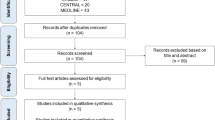Abstract
Second-generation azoles may be more effective than first-generation azoles in the prevention of fungal infections in hematology patients. We performed a systematic review with meta-analysis of randomized controlled trials comparing second- with first-generation azoles in hematology patients with respect to proven or probable invasive fungal infections, invasive aspergillosis, receipt of empirical antifungal therapy, overall mortality, and withdrawal from the studies due to the development of adverse effects. We searched the Medline, Embase, and Cochrane Registry of Controlled Trials electronic databases as well as conference proceedings from 2002 to 2012 for randomized controlled trials comparing second-generation azoles (voriconazole, posaconazole) versus first-generation azoles (fluconazole, itraconazole). Treatment effect measures for all outcomes were expressed as odds ratio with 95 % confidence interval. Meta-analysis was performed using Review Manager, version 5.1. Data from four randomized clinical trials representing a large population of patients demonstrated that antifungal prophylaxis with second-generation azoles reduces proven or probable invasive fungal infections, invasive aspergillosis, and receipt of empirical antifungal therapy in high-risk hematology patients, while there were no differences between second- and first-generation azoles with regard to overall mortality and patients or withdrawal from the studies due to the development of adverse effects. In conclusion, antifungal prophylaxis with second-generation azoles can significantly reduce the incidence of invasive fungal infections and invasive aspergillosis but with no risk of an increase in adverse events.








Similar content being viewed by others
References
Wirk B, Wingard JR (2009) Current approaches in antifungal prophylaxis in high-risk hematologic malignancy and hematopoietic stem cell transplant patients. Mycopathologia 168:299–311
Kale P, Johnson LB (2005) Second-generation azole antifungal agents. Drugs Today (Barc) 41:91–105
Girmenia C (2009) New generation azole antifungals in clinical investigation. Expert Opin Investig Drugs 18:1279–1295
Cornely OA, Maertens J, Winston DJ et al (2007) Posaconazole vs. fluconazole or itraconazole prophylaxis in patients with neutropenia. N Engl J Med 356:348–359
Ullmann AJ, Lipton JH, Vesole DH et al (2007) Posaconazole or fluconazole for prophylaxis in severe graft-versus-host disease. N Engl J Med 356:335–347
Wingard JR, Carter SL, Walsh TJ et al (2010) Randomized, double-blind trial of fluconazole versus voriconazole for prevention of invasive fungal infection after allogeneic hematopoietic cell transplantation. Blood 116:5111–5118
Marks DI, Pagliuca A, Kibbler CC et al (2011) Voriconazole versus itraconazole for antifungal prophylaxis following allogeneic haematopoietic stem-cell transplantation. Br J Haematol 155:318–327
Ananda-Rajah MR, Grigg A, Downey MT et al (2012) Comparative clinical effectiveness of prophylactic voriconazole/posaconazole to fluconazole/itraconazole in patients with acute myeloid leukemia/myelodysplastic syndrome undergoing cytotoxic chemotherapy over a 12-year period. Haematologica 97:459–463
Ascioglu S, Rex JH, de Pauw B et al (2002) Defining opportunistic invasive fungal infections in immunocompromised patients with cancer and hematopoietic stem cell transplants: an international consensus. Clin Infect Dis 34:7–14
Pagano L, Caira M, Nosari A et al (2007) Fungal infections in recipients of hematopoietic stem cell transplants: results of the SEIFEM B-2004 study—Sorveglianza Epidemiologica Infezioni Fungine Nelle Emopatie Maligne. Clin Infect Dis 45:1161–1170
Neofytos D, Horn D, Anaissie E et al (2009) Epidemiology and outcome of invasive fungal infection in adult hematopoietic stem cell transplant recipients: analysis of Multicenter Prospective Antifungal Therapy (PATH) Alliance registry. Clin Infect Dis 48:265–273
Kontoyiannis DP, Marr KA, Park BJ et al (2010) Prospective surveillance for invasive fungal infections in hematopoietic stem cell transplant recipients, 2001-2006: overview of the Transplant-Associated Infection Surveillance Network (TRANSNET) Database. Clin Infect Dis 50:1091–1100
Vardakas KZ, Michalopoulos A, Falagas ME (2005) Fluconazole versus itraconazole for antifungal prophylaxis in neutropenic patients with haematological malignancies: a meta-analysis of randomised-controlled trials. Br J Haematol 131:22–28
Maertens J, Marchetti O, Herbrecht R et al (2011) European guidelines for antifungal management in leukemia and hematopoietic stem cell transplant recipients: summary of the ECIL 3–2009 update. Bone Marrow Transplant 46:709–718
Greer ND (2003) Voriconazole: the newest triazole antifungal agent. Proc (Bayl Univ Med Cent) 16:241–248
Cornely OA, Bohme A, Buchheidt D et al (2009) Primary prophylaxis of invasive fungal infections in patients with hematologic malignancies. Recommendations of the Infectious Diseases Working Party of the German Society for Haematology and Oncology. Haematologica 94:113–122
Hicheri Y, Cook G, Cordonnier C (2012) Antifungal prophylaxis in haematology patients: the role of voriconazole. Clin Microbiol Infect 18(Suppl 2):1–15
Nagappan V, Deresinski S (2007) Reviews of anti-infective agents: posaconazole: a broad-spectrum triazole antifungal agent. Clin Infect Dis 45:1610–1617
Torres HA, Hachem RY, Chemaly RF, Kontoyiannis DP, Raad II (2005) Posaconazole: a broad-spectrum triazole antifungal. Lancet Infect Dis 5:775–785
Hamprecht A, Buchheidt D, Vehreschild JJ et al (2012) Azole-resistant invasive aspergillosis in a patient with acute myeloid leukaemia in Germany. Euro Surveill 17:20262
Chowdhary A, Kathuria S, Randhawa HS, Gaur SN, Klaassen CH, Meis JF (2012) Isolation of multiple-triazole-resistant Aspergillus fumigatus strains carrying the TR/L98H mutations in the cyp51A gene in India. J Antimicrob Chemother 67:362–366
Lockhart SR, Frade JP, Etienne KA, Pfaller MA, Diekema DJ, Balajee SA (2011) Azole resistance in Aspergillus fumigatus isolates from the ARTEMIS global surveillance study is primarily due to the TR/L98H mutation in the cyp51A gene. Antimicrob Agents Chemother 55:4465–4468
van der Linden JW, Snelders E, Kampinga GA et al (2011) Clinical implications of azole resistance in Aspergillus fumigatus, The Netherlands, 2007-2009. Emerg Infect Dis 17:1846–1854
Rodloff C, Koch D, Schaumann R (2011) Epidemiology and antifungal resistance in invasive candidiasis. Eur J Med Res 16:187–195
Alanio A, Sitterle E, Liance M et al (2011) Low prevalence of resistance to azoles in Aspergillus fumigatus in a French cohort of patients treated for haematological malignancies. J Antimicrob Chemother 66:371–374
Conflict of interest
The authors declare that they have no conflict of interest.
Author information
Authors and Affiliations
Corresponding author
Rights and permissions
About this article
Cite this article
Ping, B., Zhu, Y., Gao, Y. et al. Second- versus first-generation azoles for antifungal prophylaxis in hematology patients: a systematic review and meta-analysis. Ann Hematol 92, 831–839 (2013). https://doi.org/10.1007/s00277-013-1693-5
Received:
Accepted:
Published:
Issue Date:
DOI: https://doi.org/10.1007/s00277-013-1693-5




